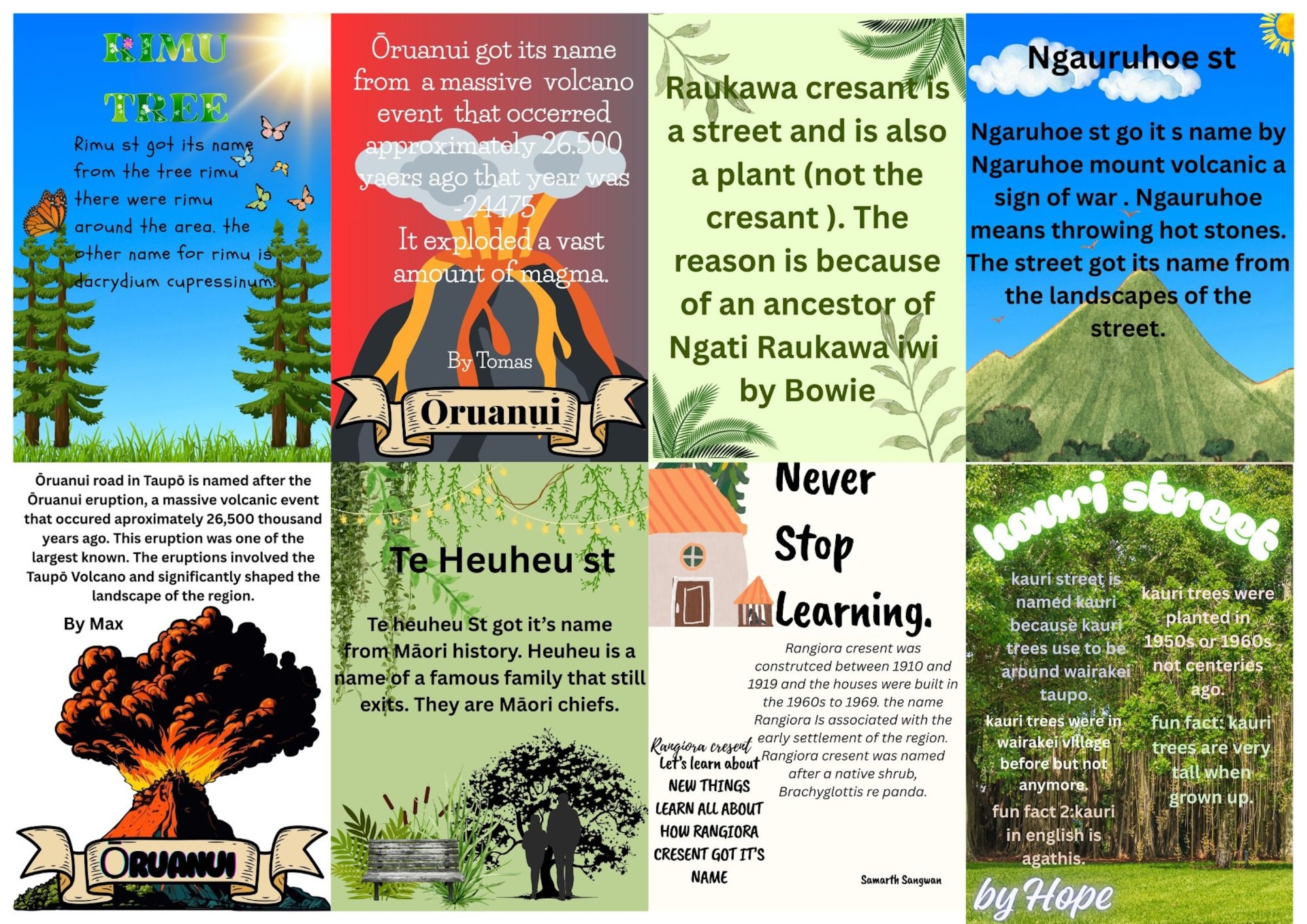The inquiry began by locating well-known streets on a printed map, such as Tamamutu Street, Te Heuheu Street, Tongariro Street, and Lake Terrace. Street names were highlighted, their possible meanings discussed, and predictions made about their origins. From there, the challenge was to research where these names actually came from and why they were chosen.
Tongariro is also the name of a mountain.
Lake Terrace has to have something to do with the lake.
Research quickly became an important skill. Learning that not all sources give accurate information, Mason questioned the accuracy of an AI-generated summary. Instead of accepting the first answer, he went deeper, checking reliable sources like Te Ara Encyclopedia of New Zealand to ensure the information was correct.
It was hard at first to look past the AI overview. It gives you exactly what you want. Looking at other websites helped me find information and put it together on my own.
The research uncovered many interesting and sometimes surprising stories
I thought that Ōruanui was just named after the marae. It was actually a volcanic explosion.
Kinloch is a Scottish word and it means head of the lake.
The name Heuheu came from a chief and there are still members of this family who exist today.
Hope researched the meaning of Kauri Drive and discovered that the name came from the mighty kauri trees. She began to wonder how many kauri trees must have once been in the Wairakei area for the street to be given that name. This led to discussions about how the environment has changed over time and how street names can also be reminders of what used to be in the landscape.
Ben focused on Lake Terrace, a street that runs along the edge of Lake Taupō. He discovered that the name simply reflects the geography of the area. What fascinated him most was how the lakeside has developed over time.
Reegan explored the meaning of Palmer Mill Road, which takes its name from the sawmills that once operated in the area. She learned that the Palmer family was involved in milling and that the road is a reminder of Taupō’s timber industry past.
Ella researched Ngāuruhoe, a street named after one of the volcanic peaks in the central North Island. She learned about the cultural and geological importance of the mountain, and how its name is used across Aotearoa.
Once the research was complete, posters and presentations were created to show the findings. Images and visuals were carefully selected to connect with the meaning of each street name. Those who studied Ōruanui added diagrams of volcanic eruptions, while work on Te Heuheu included portraits of the chief and references to his descendants.
Creating these visual presentations prompted careful thinking about how to communicate ideas clearly. Choices about images were made with the audience in mind, to best explain the story behind the street. Presentations were then shared within Room 3, giving everyone the chance to see the range of stories represented across Taupō.
Room 3 was eager to share their learning, and many commented on how they would never look at a street sign in the same way again. They now see them as markers of people, events, and landscapes that continue to shape the community. Through this inquiry, new skills were developed in research, questioning, and presentation, along with a stronger sense of pride in learning about the place they call home.





Comments
No one has commented on this post yet.